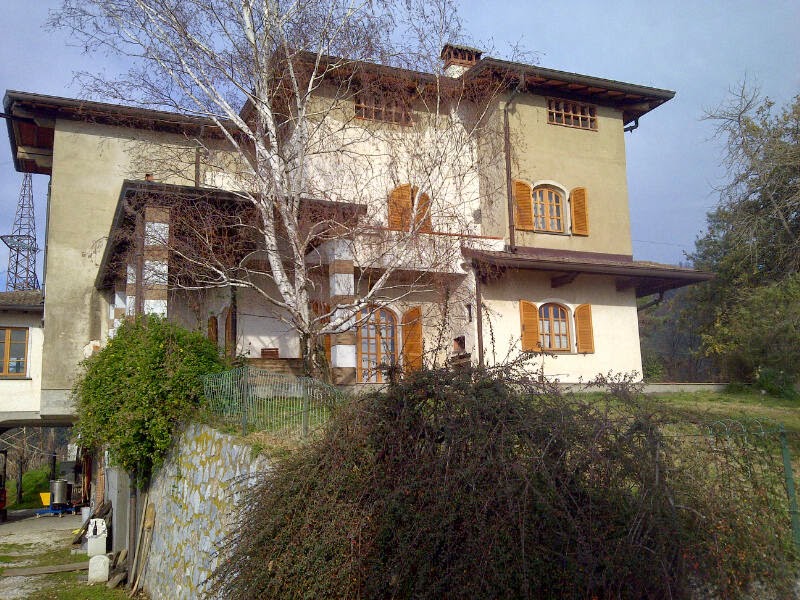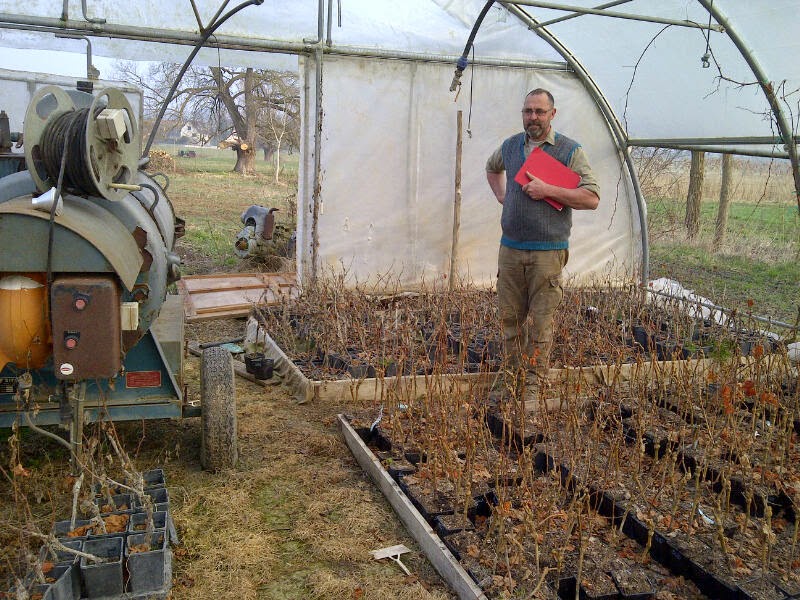While in the region of the Alpi Apuani Colli di Candia and that of the Colli Luni in the Lunigiana, we determined to seek out the distinguished Viticulturalist, Ampelologist and winemaker Pierpaolo Lorieri.
We had tried to find his property, Azienda Agricola Podere Scurtarola last year in order to buy his wine and take a look at the terroir but asking for 'Scurtarola' instead of 'Lorieri' drew a blank, probably because Scurtarola means short-cut in the local dialect.
Indeed the vineyard is midway between Massa and Carrara along a vertiginous route which is indeed a short-cut between the twin towns. We were first alerted to this property and its guiding spirit by Fred Plotkin in 'Italy for the Gourmet Traveller' who pays fulsome tribute to Lorieri's hospitality (Scurtarola is also an Agriturismo) and learning:
Rosanna and Pierpaolo have an innate understanding of the meaning of hospitality, which is, after all, an art. But like all great artists, they make their work seem effortless. PierPaolo says he hopes people who arrive as strangers will depart as friends.
We corresponded about our visit and it was indeed Sr. Lorieri who kindly conducted the correspondence even up to recommending nearby hotels and finally leaving us in the capable hands of his assistant Arianna who arranged to meet us at Macdonalds on the Carrara-Massa road (where else?) and drive us up to Scurtarola.
It turned out we were not to meet the great man himself on this occasion as he had been invited to give a lecture at the Wine Fair in Tampa, Florida but we had the good fortune to meet Sra. Rosanna Lorieri, his wife. He is internationally known for his long researches into grape varieties, often together with the University of Arezzo. He is also Presidente dell'Associazione Strada del Vino “Colli di Candia e Lunigiana".
This is how he tells the story about how he came to revive Vermentino Nero:
The Vermentino Nero grape, exclusive grape from the Apuan area, was abandoned by the makeshift wine makers of the post-war-period, but always remembered by their fathers and grandfathers. My father told me about it, and I did not listen. In 1987 my friend Fucigna asked me to produce the Vermentino Nero in purezza. But I, skeptical, became curious and due to the promise I really did produced it in 1989.
This is how Vermentino Nero was born. I started traveling to find possible synonymous that do not exist; I started studying about making of red wines in the soil of whites, about long-living wines in area of fast wines. And the continued contradiction of a culture which wants to mix together the grape in the vineyard and in the winecellar. Avant-guard of new ideas.
Today, after having selected some biotypes in the farm, I start to harvest the fruits in the vineyard. The wine making of Vermentino is easy: perfect grape, low yield per hectar, maximum of concentration, long maceration with the skins, long aging in kegs, continued control of taste, bottling, refinement in bottle. Nearly academic. But that's the way it is.
A simple method, precisely for a long-living product, almost 13 years (in September 2003 I opened a bottle from 1990) with a bouquet of undergrowth, colour... black, warm taste, full, smooth. In short: a wine makes you eat and drink with the same glass.
Arianna told me that Sr. Lorieri has made a study of countless other little-known and forgotten grape varieties and makes trials with them with the goal of reviving another Vermentino Nero one day.
He also works with companies to mechanize the work in the extreme vineyards of the area. They have produced a special miniature tractor for work on the terraces.
Apparently, one man could carry two baskets full of grapes from the bottom of the hill in the old days whereas now it takes two to carry one.
On our drive up the Via dell'Uva to Podere Scurtarola, Arianna kept such statistics coming fast and furious. There are 4 hectares belonging to Scurtarola out of 400 hectares cultivated between Massa and Carrara, some of which are at an incline of 80%. Pierpaolo Lorieri has a collection of 51 different vine varieties of which 36 are from the area and 4 are completely unknown. There are 1,000 growers in this zone. For the last 4 years, landslides (frane) have bedeviled the area and hectares have been lost.
Scurtarola make 6 different wines,
'Gocce di Pietra' a blend of Vermentino (75%), Albarola (10%), Trebbiano (10%) and Malvasia (5%)
'Luci del Tramonto', a sweet version of Gocce di Pietra with the same blend
Vermentino Bianco
Scurtarola Rosso, Sangiovese (40%), Massaretta (20%), Cilegiolo (20%) and Buonamico (20%)
Vernero (Vermentino Nero 100%)
Federico I, a Passito made with Vermentino, Albarola, Trebbiano, Malvasia and Bosco.
There is also a sparkling wine and a Grappa.
 |
| Arianna, our well informed guide |
Arianna also showed us the meeting and dining room at the house. One can imagine the evenings described by Plotkin at which Pierpaolo Lorieri dispenses his famous hospitality while enlightening his listeners with information about his researches and discoveries.
We were not able to secure a bottle of Scurtarola Rosso but we did manage to get one of the Vermentino Nero. The Gocce di Pietra sounds interesting as do the others for another time.
Pierpaolo Lorieri is a primary candidate for the Slotovino Wine Personality of the Year award and that is without even having met him!
There is much more to this fascinating region. Missing from our survey of the area this time were the wines of Cima, a young and energetic producer with a good reputation.
and the wines of Tenuta Palatina whose very enjoyable Negreto was our introduction to the area.
We should also mention Testaroli, the pasta of Pontremoli. Its idiosyncratic form allows Pesto Genovese to stick to it nicely. Plotkin pays homage to Rosanna Lorieri's oven baked testaroli: 'crepes of a sort that is cut then tossed with oil and cheese or pesto.'
In her book 'Treading grapes. Walking through the vineyards of Tuscany' Rosemary George MW refers to Candia dei Colli Apuani, Colli di Luni and the Val di Magra as a lost corner of Tuscany. Together with the Garfagnana it seems to us to play the same role as the trans-frontier region of Vinho Verde, Ribeira Sacra, Ribeiro of Portugal and Spain: unique varieties bearing no relation to the usual and so little known as to be unfamiliar at times even in their own regions. Isn't that amazing?






























































